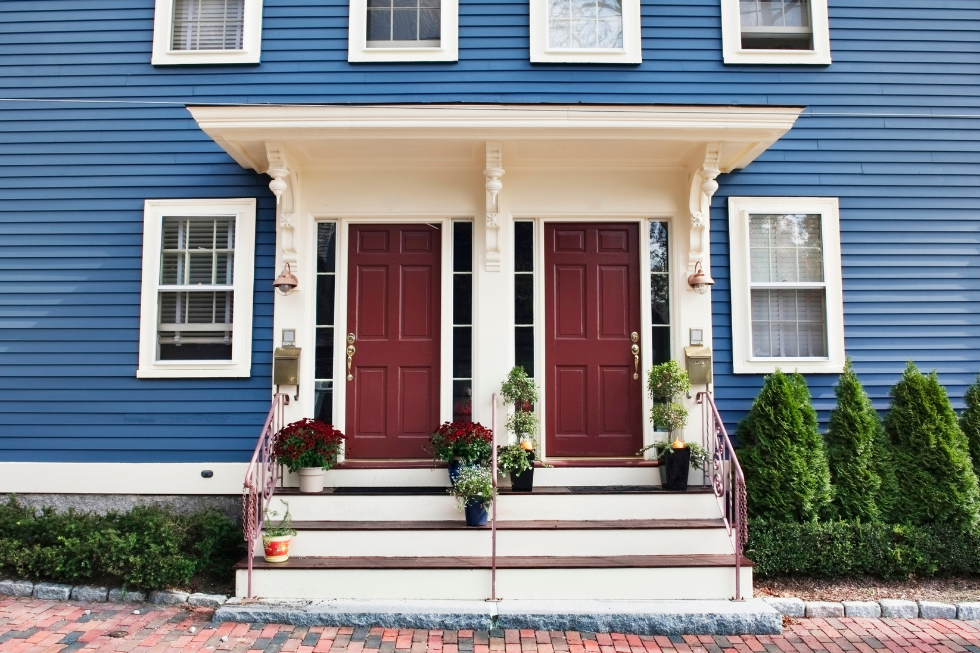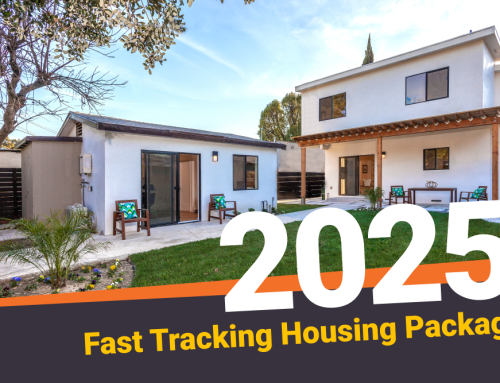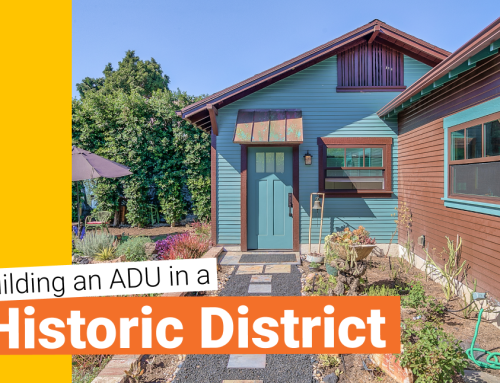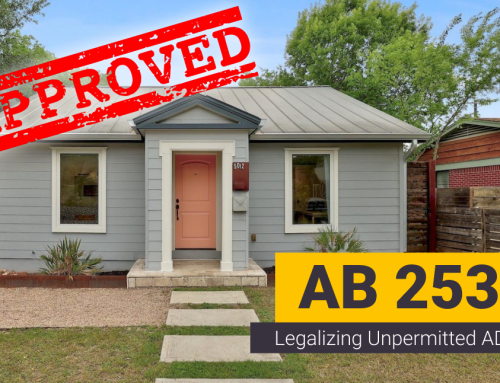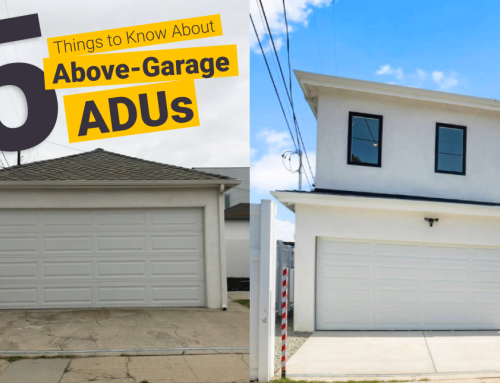California Senate Bill 9 went into effect in 2022 and has already proven to be as big of a game-changer as the 2020 legislation that allowed ADUs to be built in the backyards of single-family homes.
Under SB9, homeowners can build a duplex or split their property into two lots and build a duplex on each one.
A majority of Californians support SB9, as reported in the Los Angeles Times. Not surprising when you consider the thousands of ADUs springing up in backyards across the state!
But how much has SB9 really changed opportunities in your neighborhood and for your property?
We asked Director of Strategic Initiatives of the Casita Coalition, Jared Basler, to walk us through this bill.
The intent of SB9: Increase housing on single-family zoned lots and boost home ownership

SB9 uses two provisions to maximize housing units on a single-family lot:
- Duplex provision
- Lot-split provision
With these new provisions, property owner will be allowed to split a lot and add a duplex on each, quadrupling the number of housing units. Or the split lots can be sold separately. Ideally, the smaller lots and the units on them would sell at a more affordable rate than typical single-family homes.
Let’s look into the details of each of these provisions.
The SB9 duplex provision
With SB9, a single-family lot can now have two units on it. The second dwelling can be either attached or detached from the primary house.
The addition of the second dwelling must be ministerially approved. “Ministerially” means that cities can’t have subjective style standards such as matching the harmony of the neighborhood or the style of the primary house. Standards must be objective.
Cities can adopt development standards such as maximum height and minimum setbacks, like the standards in ADU legislation.
Parking exemptions are the same as those for ADUs: No parking spaces are required as long as the property is within a half-mile of public transportation.
No relief from development impact fees for duplexes
A big difference between building an ADU and a duplex is that with a duplex you will need to pay development impact fees regardless of the unit’s size.
If you build an ADU that is under 750 square feet, you don’t have to pay development impact fees.
Can you convert an ADU to a duplex? To be determined
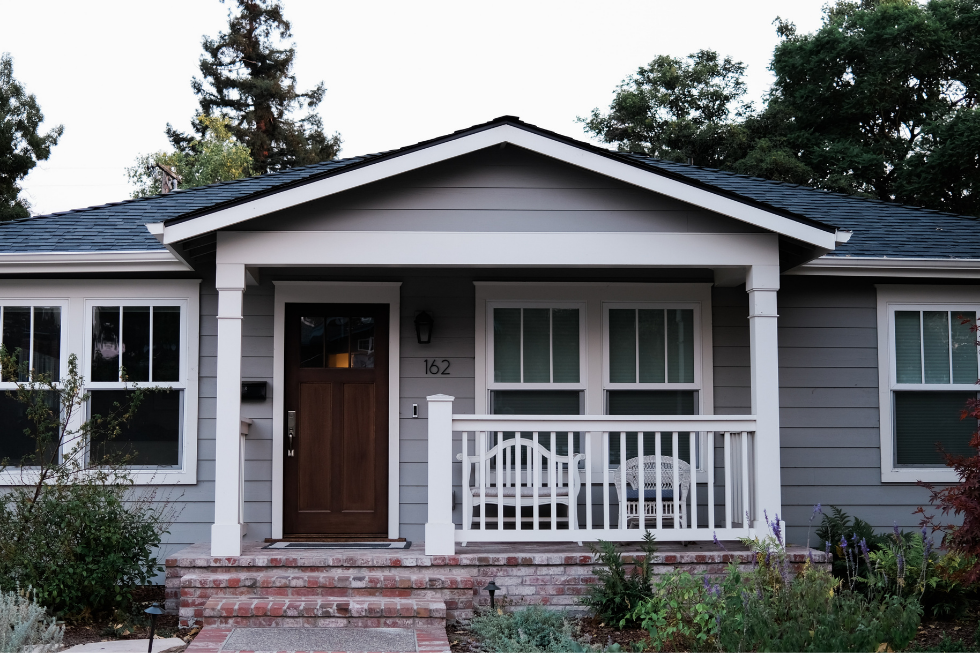
If you intend to eventually split your lot and sell it, it’s best to hold off on adding an ADU.
The reason? There is nothing in the current bill that addresses converting an ADU to part of an SB9 duplex, or converting an ADU into the primary residence on a split lot.
There’s also nothing in the bill that states whether a second unit that’s an ADU can eventually be sold, or whether it would have to be a rental.
With so many issues up in the air, you’d be taking a risk permitting the unit as an ADU if you plan to someday split your lot and sell it.
Confused? Let our ADU experts explain SB9 and your options! Check your address for an ADU Planning Phone Call.
Moving onto the next provision: lot-splits
The SB9 lot-split provision
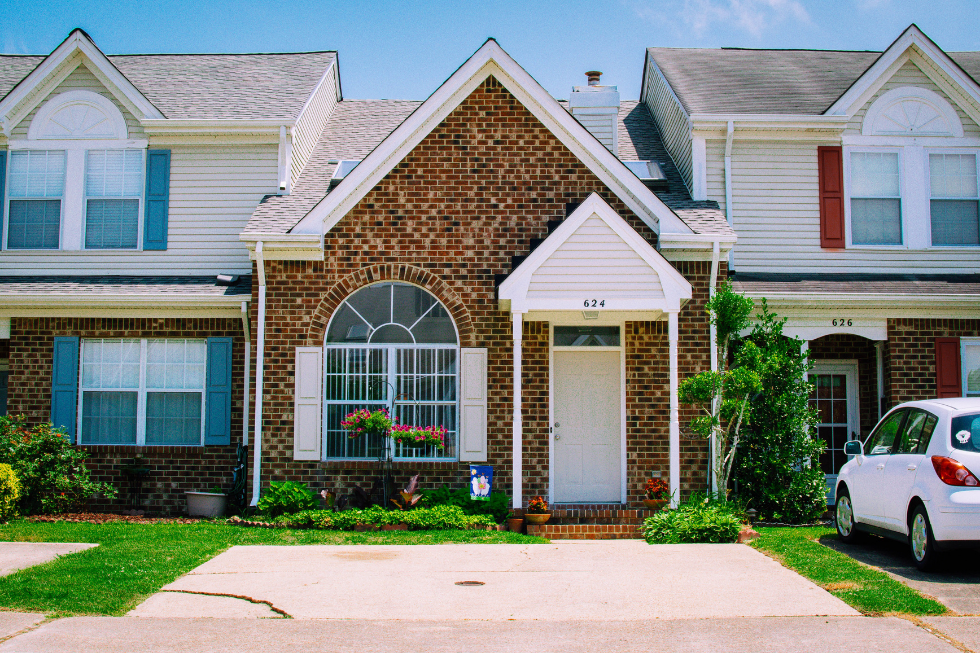
Here are the basics of the lot-split provision:
- A single-family lot can be split into 2 lots.
- It can only be done once: you can’t split it and then split it again.
- The minimum lot size is 1200 square feet.
- The split can’t be greater than 60/40. So you can’t have a very large lot and a tiny 1200 square foot lot.
- The lots are not exempt from mapping acts or from development and other fees.
- Local agencies can impose development standards such as utility easements, right-of-way access, setbacks, etc.
- Local agencies must allow for minimum 800-square-foot units on the split lots.
Protecting existing rental units
The goal of SB9 is to create more housing, not take away existing housing. So you’re not allowed to demolish existing rental units if they have been rented within the past 3 years.
This is true even if you want to demo a structure in order to build a duplex in its place.
Owner occupancy is required
Property owners who want to split a lot must sign an affidavit saying that they intend to live in a unit on one of the lots for 3 years. This is to prevent developers from coming in and buying up lots and splitting them one after another.
Signing an affidavit makes the clause enforceable: if you sign it and then don’t live on the property, you can be brought up on a perjury charge.
Duplexes, lot splits, and ADUs

You can use the lot-split provision by itself, the duplex provision by itself, or use both of them. If you use both, you are not allowed to build ADUs.
In other words, you can’t split your lot, build a duplex on each lot, and then call both of them multi-family structures and add more detached ADUs on each lot as described in the workaround mentioned earlier.
That could result in 8 units of housing on a single-family lot, and it’s forbidden.
A workaround if you want 4 units of housing but don’t want to split your lot
SB9 does open up an interesting opportunity if you want to increase the number of units on a property with a single-family home without splitting your lot.
- Under SB9, you can add an attached unit to your primary home and create a duplex. ADU laws consider a duplex to be a multi-family structure, but the units must be attached to each other.
- Under ADU laws, a property with an existing multi-family structure may have up to 8 detached ADUs. The amount of detached ADUs you are allowed to build depends on the number of housing units within the multi-family structure. So after you have turned your primary home into a duplex, which has two living spaces, you can add 2 detached ADUs to your property.
It has to be a 2-step process: first build the attached unit to create a duplex out of the primary dwelling. You now have an “existing” multi-family structure. Then you can build 2 ADUs.
Under current laws you won’t be able to split the lot or sell any of the units separately, but you can rent them.
Fees, maps, financing, and other unknowns
Although SB9 may eventually result in dramatically denser neighborhoods, at this early stage there are a lot of kinks to work out.
Fees associated with splitting a lot can run as high as $80,000 due to, among other things, a requirement some older neighborhoods have that their parcels be remapped in order to split lots.
The first person to split their lot gets stuck with this parcel-mapping fee, which can be tens of thousands of dollars. This is an inequity in SB9 that needs to be fixed.
The timeline for splitting a lot can be anywhere from 18 months to 2 years.
Lenders have not yet figured out how to deal with lot splits: if you have a mortgage, you’re likely to get a lot of pushback. If you own the property outright it’s not a problem.
There’s also the challenge of access to a split lot. Corner lots are ideal and alley lots also have easy access to a second lot. Property in the middle of a block will need to be reconfigured as a flag lot, but any of this would depend on the city’s right-of-way and easement regulations.

For these reasons and more, a Terner Center report about the impact of SB9 found that “relatively few new single-family parcels are expected to become financially feasible for added units as a direct consequence of this bill.”
SB9 is a complex bill, but it definitely opens up opportunities to build both duplexes and ADUs.
For more info about how the bill may change your ADU options, give us a call!
How to apply for SB9
Successfully navigating SB9 lot splits and duplex provisions in Los Angeles requires a comprehensive understanding of the regulations and possibilities available to homeowners. After ready this blog, you’re already part way there!
First and foremost, confirming property eligibility is crucial before delving into the application process. Properties within single-family residence zones, vacant or not exceeding two dwelling units per parcel, with lots at least 1,200 square feet post-split, and adhering to a split ratio not exceeding 60/40, are eligible. Additionally, the split can only occur once per property and owner occupancy is required on one of the lots for a minimum of three years.
Finally, your lot split or duplex plans cannot result in the demolition of recently occupied/rented units. If these criteria are met, homeowners can proceed to initiate the application process.

Just as you would apply for an ADU permit, you’ll need to hire a designer to prepare all of the required documents. Designers experienced in coordinating with the city can expedite applications and ensure compliance with local regulations and alignment with zoning laws. During initial consultations, designers assess the property, discuss ideas for the new unit if you are adding a duplex, and handle the permit set creation necessary for obtaining required permits.
From there, it’s a waiting game as your application runs through various city departments.
Struggling to find a designer? Maxable has got your back.
SB9 FAQs
Can I use SB 9 to split my lot more than once?
No, SB 9 allows only one lot split per property. You can divide a qualifying single-family lot into two, but cannot subdivide again.
Is owner-occupancy required when using the duplex provision?
No, owner-occupancy only applies when you’re doing a lot split, not simply adding a second unit. If you’re converting your home into a duplex on the same lot, you can rent both units freely—but if you split the lot, you’ll have to live on one of the resulting lots for at least three years.
What are the objective standards cities can apply for SB9?
Cities can enforce objective standards, like setbacks (up to 4 ft), height limits, parking rules, and utility easements, but cannot impose subjective design criteria based on neighborhood aesthetics. Also, within half a mile of transit, cities cannot require parking spots for SB 9 units.
Maxable makes planning, hiring, and building for your property simple
Maxable is California’s leading ADU marketplace. After helping write state laws, educating thousands of homeowners, and completing hundreds of site evaluations and ADU projects, we know accessory dwelling units better than anyone else! Get in touch when you’re ready to find out the next steps for your project. It all begins with an ADU Planning Phone Call. Talk to you soon!

